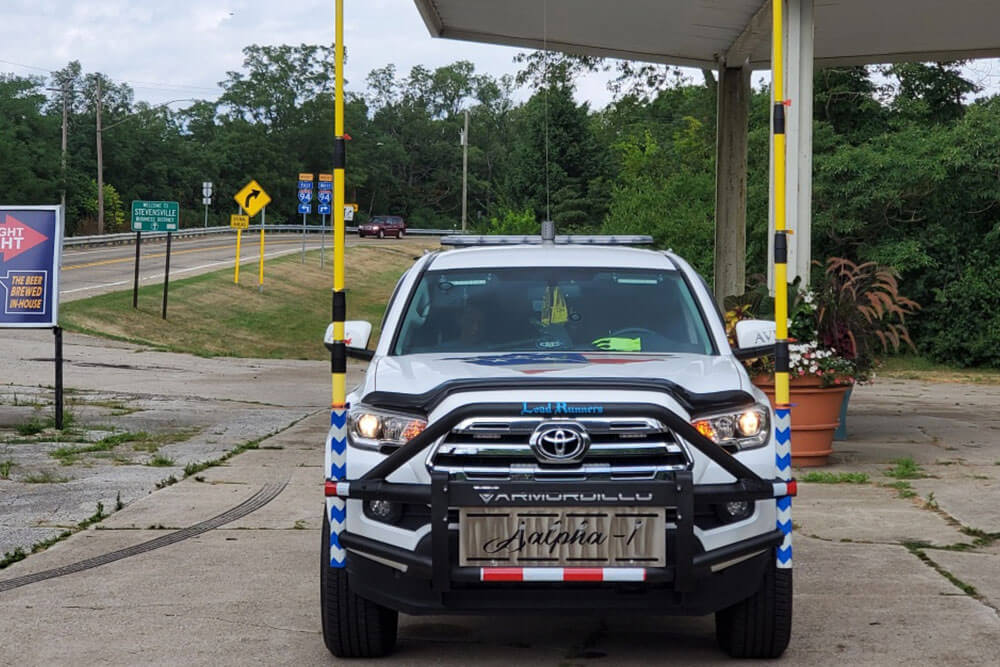As the seasons change and the vibrant colors of autumn begin to emerge, pilot car drivers in the United States and Canada must be especially vigilant when it comes to route planning. The fall season brings unique challenges that can impact road conditions and traffic patterns, making thorough route planning essential for the safe and efficient transportation of oversized loads. In this article, we will explore why route planning is even more important for pilot cars in the fall and offer valuable insights to help drivers navigate these challenges effectively.
Understanding the Challenges of Fall Driving
Before delving into the specifics of route planning, it is crucial to understand the challenges that pilot car drivers may encounter during the fall season. Some of the key factors that can impact driving conditions during this time of year include:
- Weather Variability: Fall weather can be highly unpredictable, with sudden changes in temperature, foggy mornings, heavy rain, and even early snowfall in some regions. These conditions can affect visibility and traction on the road, making it essential for drivers to adjust their routes accordingly.
- Foliage and Road Debris: The beautiful fall foliage that adorns the landscapes can present hazards for drivers, such as wet leaves covering the road surface or branches that have fallen onto the roadway. Pilot car drivers need to anticipate these obstacles and plan their routes to avoid potential risks.
- Increased Traffic: Fall is a popular time for outdoor activities such as leaf-peeping, pumpkin picking, and harvest festivals. As a result, roads in scenic areas may experience higher volumes of traffic, leading to potential delays and congestions that can impact the timely delivery of oversized loads.
- Daylight Hours: With daylight hours becoming shorter in the fall, pilot car drivers need to plan their routes in consideration of reduced visibility during early mornings and evenings. Illumination and reflective gear become crucial for ensuring visibility to other motorists on the road.
The Importance of Route Planning for Pilot Cars
Given the unique challenges posed by the fall season, meticulous route planning is an indispensable aspect of ensuring the smooth and safe transport of oversized loads by pilot car drivers. Here are some reasons why route planning is even more critical during this time of year:
- Safety and Risk Mitigation: By carefully mapping out a route in advance, pilot car drivers can identify potential hazards, road closures, or construction zones that may pose risks to the transportation process. This proactive approach enables drivers to take necessary precautions and ensure the safety of themselves and other road users.
- Optimizing Efficiency: Effective route planning allows pilot car drivers to select the most efficient and least congested roads for transporting oversized loads. By avoiding heavy traffic areas and roadblocks, drivers can minimize delays and adhere to delivery schedules more effectively.
- Compliance with Regulations: Oversized load transportation is subject to specific regulations and restrictions that vary by jurisdiction. Through thorough route planning, pilot car drivers can ensure compliance with legal requirements regarding route permissions, escort vehicle specifications, and travel timelines.
- Communication and Coordination: Route planning facilitates clear communication and coordination among pilot car drivers, truck drivers, dispatchers, and any relevant authorities involved in the transportation process. By sharing detailed route information in advance, all parties can work together seamlessly to overcome challenges and navigate the journey successfully.
Strategies for Effective Route Planning in the Fall
To enhance the effectiveness of route planning for pilot cars in the fall, consider implementing the following strategies:
- Utilize GPS Technology: Invest in reliable GPS navigation systems that provide real-time traffic updates, weather forecasts, and route optimization features to assist pilot car drivers in making informed decisions on the road.
- Stay Informed: Stay abreast of weather reports, road closures, and traffic alerts relevant to your planned route. Be prepared to adjust your route dynamically based on changing conditions to ensure a safe and efficient journey.
- Plan Alternative Routes: Anticipate potential disruptions by identifying alternative routes or detours in advance. Having contingency plans in place can help pilot car drivers navigate unexpected obstacles without compromising delivery schedules.
- Coordinate with Authorities: Establish communication channels with transportation authorities, police departments, and relevant agencies to obtain up-to-date information on road conditions, construction projects, and any special considerations for oversized load transportation.
- Maintain Vehicle Readiness: Conduct regular maintenance checks on pilot cars to ensure they are equipped with adequate lighting, signage, and safety equipment for fall driving conditions. Verify that all vehicles are in optimal working condition before embarking on any transportation task.
By incorporating these strategies into their route planning efforts, pilot car drivers can navigate the challenges of fall driving with confidence and efficiency, ensuring the successful transport of oversized loads while prioritizing safety and compliance.
Final Thoughts
Route planning plays a vital role in enhancing the safety, efficiency, and compliance of pilot car operations, particularly during the fall season. By understanding the unique challenges presented by autumn driving conditions and adopting proactive route planning strategies, drivers can overcome obstacles and deliver oversized loads with precision and reliability. Remember, thorough preparation and strategic decision-making are key to successful route planning for pilot cars in the fall.

